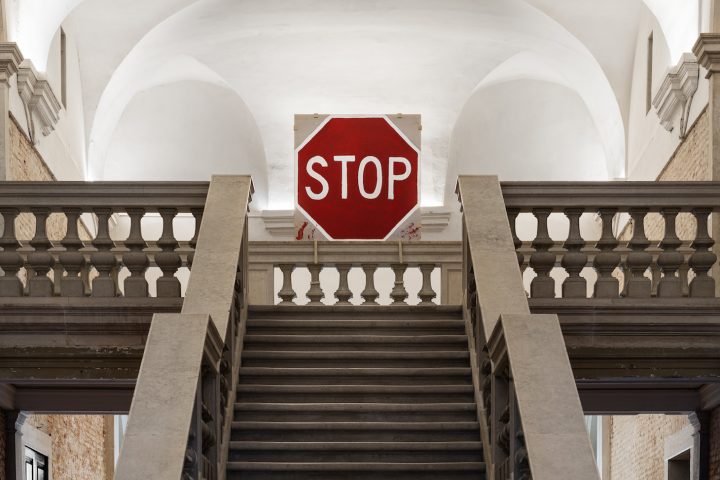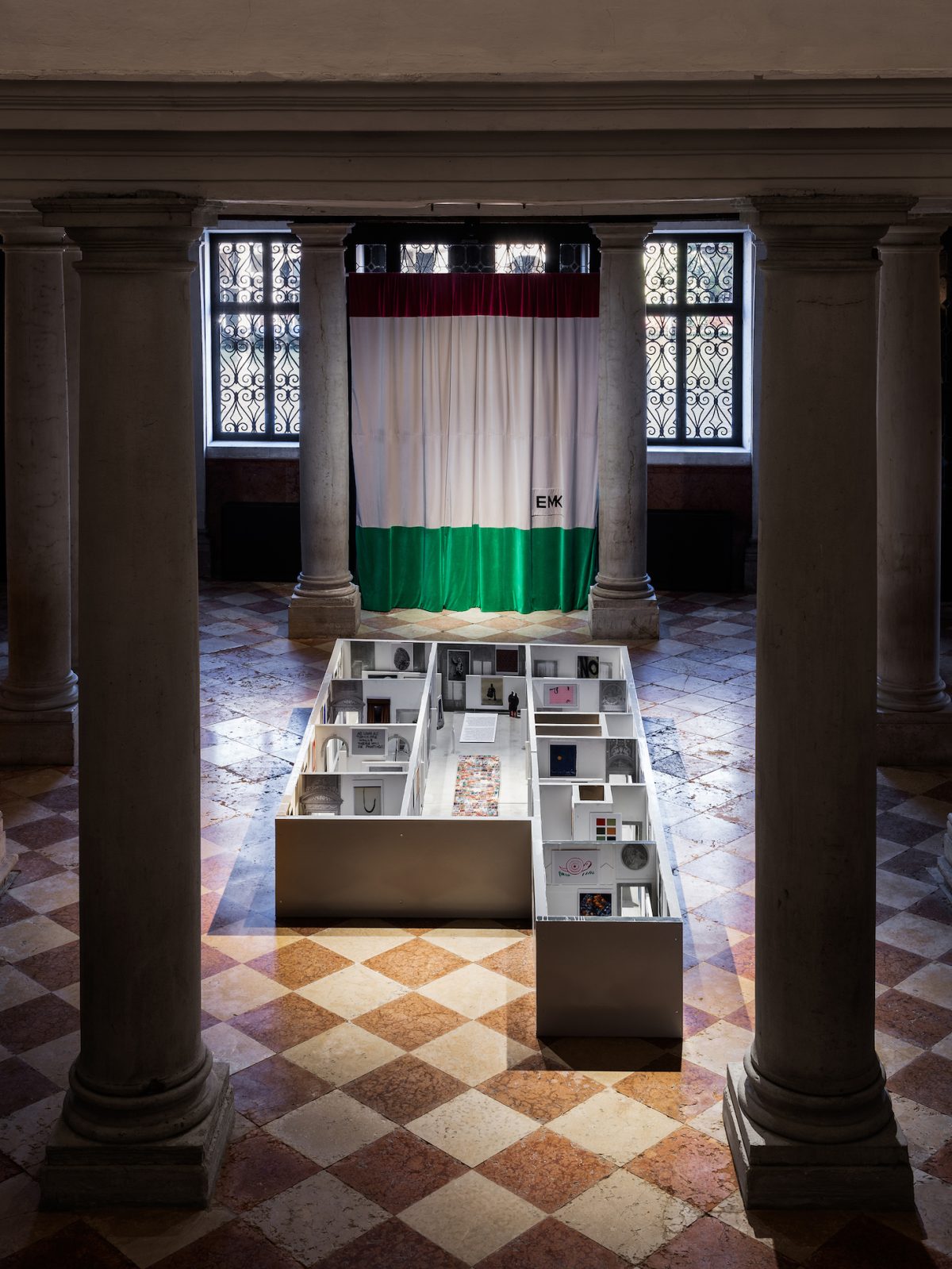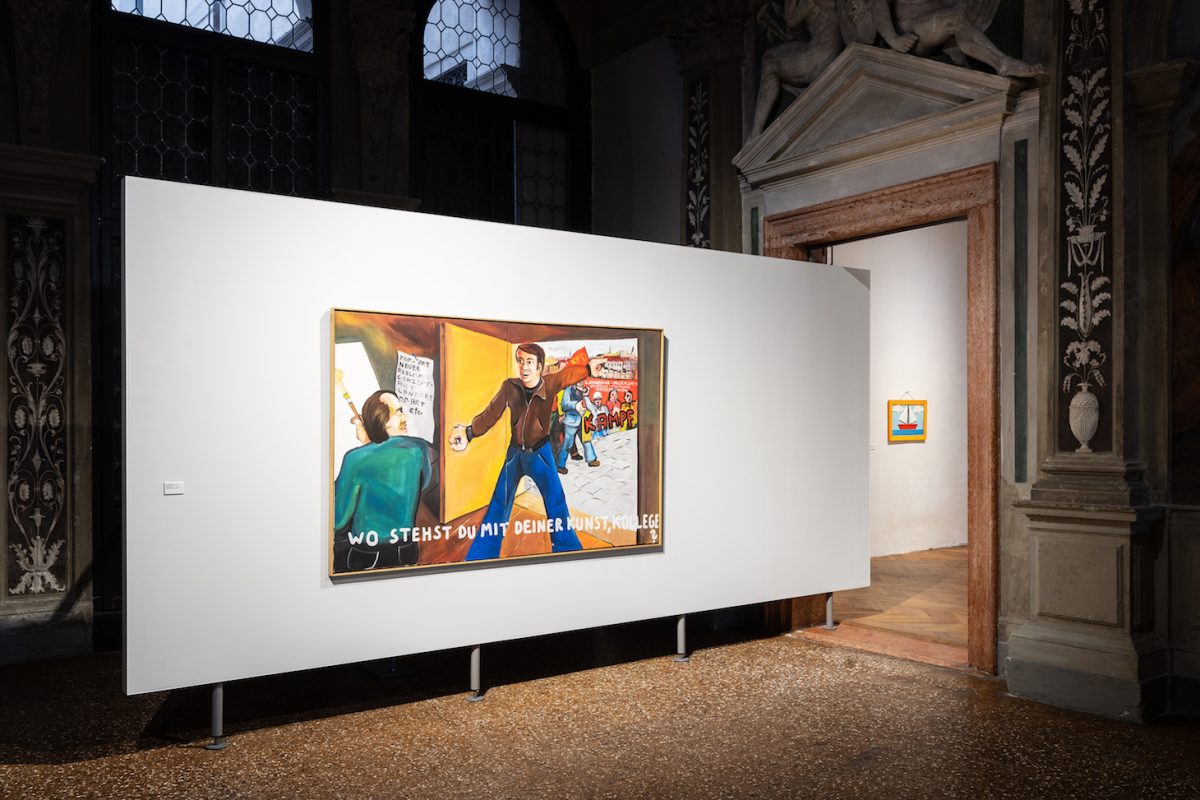
VENICE — I don’t know about you, but I can barely stand going to a museum or gallery exhibition after this pandemic year. Something about the capacity for change promised by art, often touted by art-world institutions in order to justify their own existence, rings especially hollow in this moment. To put it bluntly, why art?
Stop Painting, currently on view at the Fondazione Prada in Venice, gets at the heart of this dilemma. Conceived by artist Peter Fischli, the exhibition traces ruptures in the history of painting and how those very same ruptures are integrated into the canon, in a constant cycle of self-cannibalization. Starting from the invention of photography and the first proclamation that “painting is dead” by Paul Delaroche in 1840, the exhibition takes the viewer through five major crises in painting — including the death of the author, the invention of the readymade, and institutional critique — and shows how painting nevertheless finds a way to be reborn, despite repeatedly being written off as irrelevant.

The very first work upon heading upstairs screams STOP. Josh Smith’s 2021 painting acts as the threshold between the so-called “death of painting” and its afterlife, setting the stage to consider what happens after the death of painting. Through the winding rooms of the Venetian palazzo, viewers are confronted with works by a breathtaking array of artists arranged according to themes, such as “NIENTE DA VEDERE NIENTE DA NASCONDERE” (“NOTHING TO SEE NOTHING TO HIDE”), in which artists including David Hammons and Michelangelo Pistoletto obscure the surfaces of their paintings, and “DIE HARD, STIRB LANGSAM, DURI A MORIRE,” where artists like Marcel Broodthaers, Honoré Daumier, Asger Jorn, and Kurt Schwitters deploy humor and satire to poke holes in conventional notions of authenticity and the value of painting.
The exhibition serves as a reminder that all of these artists changed the history of painting, only to become part of the establishment, their interventions repeated by artists today as hollow gestures far removed from their original context. The magnum opus is Fischli’s own tongue-in-cheek contribution: a maquette of the exhibition itself, showing a miniature Fondazione Prada hung with tiny reproductions of the surrounding artwork. Titled “Modellone” (2021), the work reifies the entire conceit of the exhibition: that is, the difference between representation and the thing itself. Fischli points to the paradox that he, too, is participating in the same attempt to get past the object — and that despite the momentary meaning gleaned from its curation, the show will inevitably be reduced to its aesthetics.

On one hand, Stop Painting offers a hopeful and even romantic perspective on the infinite inventiveness of artists who, with seemingly nowhere to go, still manage to push painting to its limits — destroying the surface of the painting, taking it off its stretchers, and hiding it from view, for example. On the other hand, it could be read as cynical and refreshing in its honest depiction of the art market’s dead-end nature. Before resigning ourselves to this never-ending doom loop, however, it is important to keep two points in mind.
The first is that the very systems from which the artists in Stop Painting are attempting to break away are the same ones that grant them value and status within the art-historical canon. Co-option is not inevitable, as history is rife with cases of artworks that rupture the paradigm of painting but are ignored by the art market, academia, and the western institutions that historically have defined art. However, any attempt to look for artists who have been able to break free of the institutions that validate them as worthy of note will inevitably end in failure; oftentimes, we only know about artists who have attempted to circumvent art-world value systems precisely because they have been memorialized by those selfsame systems.

The second is that art is limited by its form as a primarily visual medium comprised of commodified or commodifiable objects, its power mostly functioning on a symbolic level. Though art has the capacity to serve as a political tool to envision new possibilities, it is also by its nature removed from political systems of change, complicating any attempt to undermine art’s rarified status.
In one fell swoop, Stop Painting recognizes art as an impossible endeavor that is perhaps most generative when its conflicts remain unresolved — which is perhaps just how it should be.
Stop Painting continues at the Fondazione Prada (Calle Corner, 2215, 30135, Venice, Italy) through November 21. The exhibition is curated by Peter Fischli.
0 Commentaires